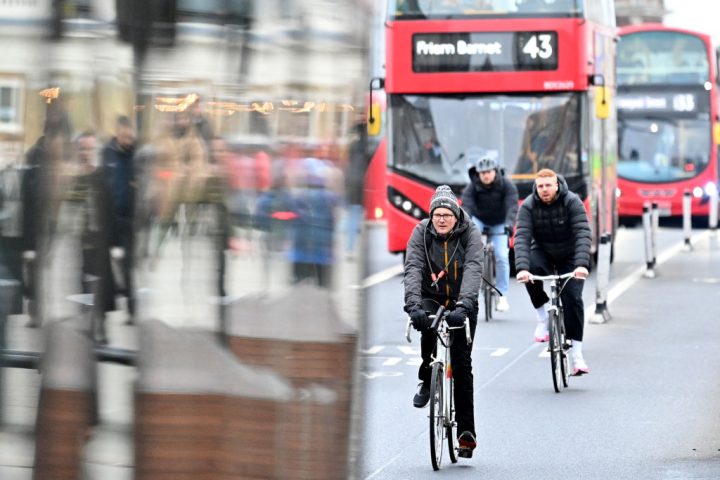Social distancing. Test and trace. Face-masks (what was wrong with just ‘masks’? Nobody could ever tell me). Clapping. Substantial meals. Scotch eggs. I think I speak for the majority when I say that those terms evoke both profound relief that it’s all behind us and a sense of unreality.
I confess I’m flirting with the ultimate commuter cliché and browsing daily for deals on a Brompton
Did the pandemic really happen? From one point of view, we see the effects all around us in the form of NHS waiting lists, ‘ghost’ children absent from school and the parlous state of the economy. On a personal level, however, it feels like we’ve awoken from a long, bad dream to a world that is basically unchanged, only grimmer than it was before.
Which brings me to cycling. The one thing I miss about those days of untrammelled state authoritarianism is the opportunity it afforded to spend serious time in the saddle. Like millions of others, freed from much of my workload – I was a foreign reporter at the time, and foreign travel came there none – I hit the road with a vengeance, reaching heights of fitness I never thought possible.
I’m not being smug. I have since descended from those heights faster than Tom Pidcock at Stage 12 of the Tour De France in 2022. If you must know, my VO2Max has slipped by about seven points, each one of which had been gained by way of great suffering, and each one of which I grieve. I’m still cycling but I’m a shadow of my former self.
And I’m not alone. In March, it emerged that sales of bicycles had hit a 20-year low after the panic buying of the pandemic years. Many commentators – including, I must admit, myself – spoke at the time of the end of the Covid bicycle boom. But official figures released this week suggest that reports of the death of cycling were perhaps exaggerated.
It is true that the number of bikes on the road has plummeted by 24 per cent since March 2021, when the novel coronavirus raged. A graph included in the snappily-titled Cycling Index England report shows a descent that resembled a profile of the famous Portet d’Aspet. Very steep.
Look at it over the long-term, however, and a different picture emerges. While the Covid peak represented a 63 per cent rise in cycling compared to ten years previously, we remain 11 per cent above pre-pandemic levels. And if you look at the numbers from 2013, bicycling is now 24 per cent more popular. The recent trend may be down, but it has become a gentler incline and there is every hope that it will level out in the months and years to come, making some cycling gains permanent.
Take motor traffic. It increased by nearly 13 per cent between Covid-riddled 2021 and the end of 2022, but still stands 5 per cent lower than it did at the start of the pandemic. The evidence suggests that our long-term, post-virus future will be one of slightly fewer cars and a modest increase in bicycles.
Even the spiralling sales figures could create a false impression. Bikes have a reasonably long life, and the surge in demand during the lockdowns likely means that most people who want one now have one. As time passes, the wheel will turn once again, particularly with the increasing popularity of e-bikes.
I put my own cycling struggles down to the rigours of my commute. Like many others, I’m back in the office in London five days a week these days, and as I live in Winchester, that demands three or four hours of commuting daily. By the time I get home, I’m knackered and often lack the motivation to fire up Zwift. On the weekends, with a mild hangover (the best sort), the siren call of the lie-in is more seductive than before.
But I’m hanging in there. Two, maybe three shortish sessions a week. In the summer, God willing, I’ll sign up for a race and return to serious training (unless Covid stops me like it did last year). In the meantime, I confess I’m flirting with the ultimate commuter cliché and browsing daily for deals on a Brompton.







Comments